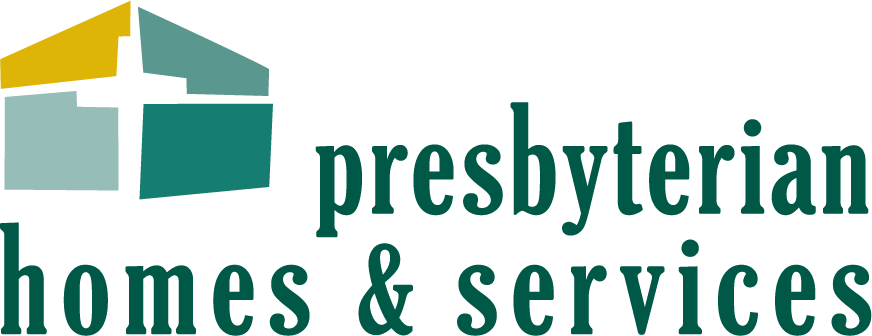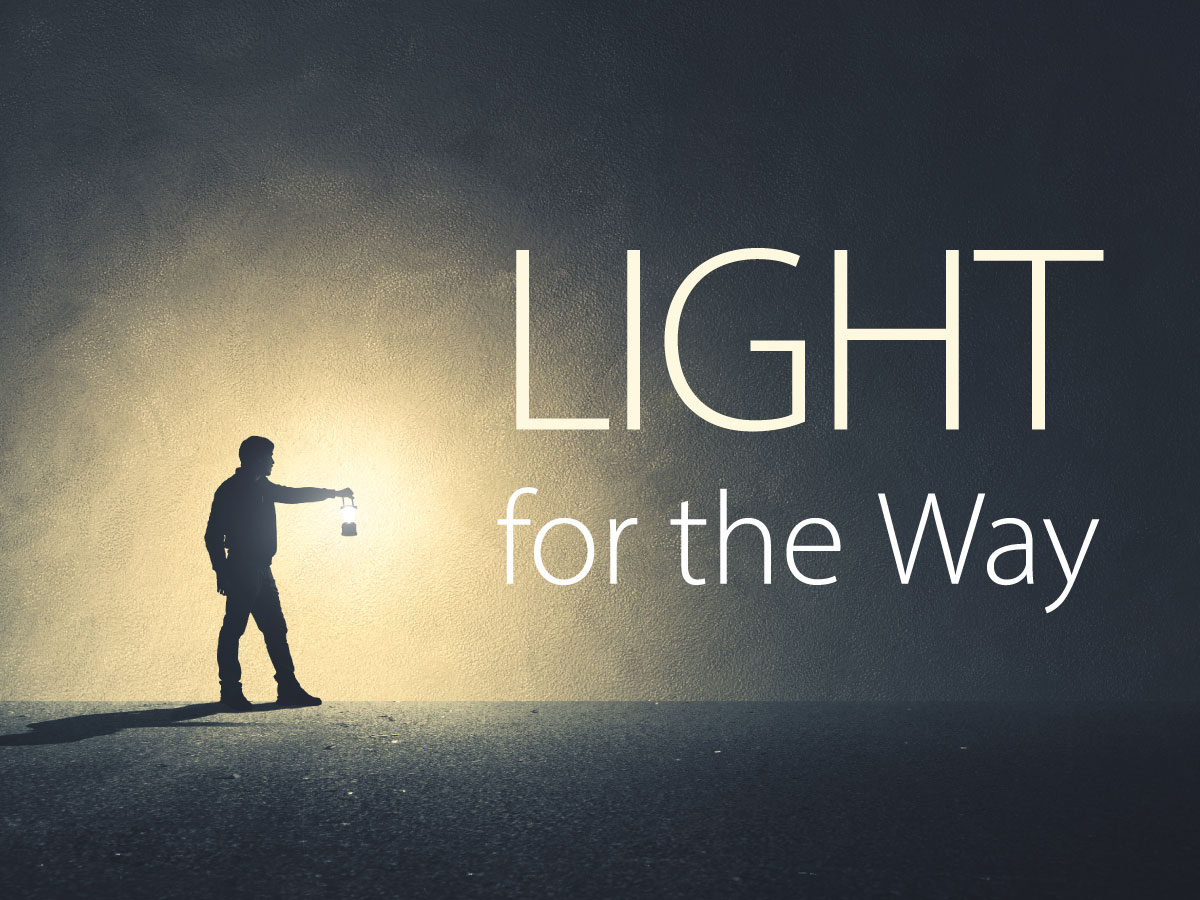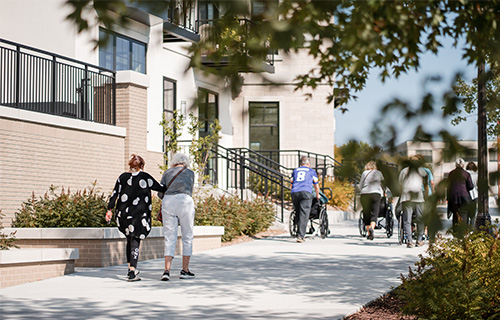 We’re thrilled to share a special Earth Day reflection from Brandon Due, vice president and administrative officer. In this blog post, he explores how we foster environmental stewardship while empowering residents to live more fulfilling lives. Read on to discover the unexpected intersection of sustainability and senior living!
We’re thrilled to share a special Earth Day reflection from Brandon Due, vice president and administrative officer. In this blog post, he explores how we foster environmental stewardship while empowering residents to live more fulfilling lives. Read on to discover the unexpected intersection of sustainability and senior living!
Every April 22, Earth Day brings a fresh wave of “to-do” lists: recycle, turn down the thermostat, plant a tree. This is not one of those lists.
This year I want to share a powerful lesson I learned from Stephen Mouzon’s book, “The Original Green – Unlocking the Mystery of True Sustainability.” He steers the conversation away from obligations (what people ‘ought to’ do) and towards activities driven by passion or personal gain (things people love to do or find beneficial).
After more than a decade of working in senior living, I have been blessed to witness the power of community at Presbyterian Homes & Services (PHS). Reflecting on Mouzon’s book, I keep seeing parallels. In fact, I am convinced that choosing a senior living community is a deeply sustainable decision.
A walk with Ray
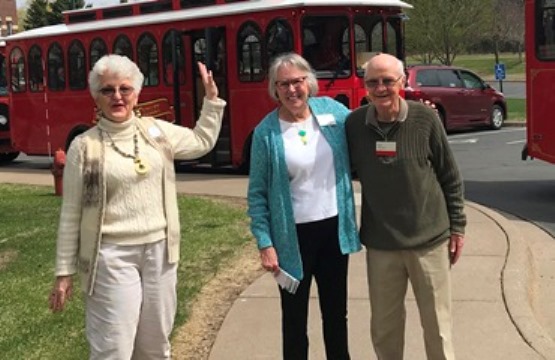
It is here that I want to introduce you to Ray Hunder. Ray lives at Boutwells Landing in Oak Park Heights, Minn., and embraces life in community and all its sustainable benefits.
Ray begins each day with a walk – a long walk! Years ago, he was in a serious car accident, and he wasn’t sure if he could walk again. But a physical therapist coached him to keep moving, and Ray listened!
As he walks, he prays over the community, observes the creatures around the walking trails and interacts with neighbors.
Everyone knows Ray. Besides long walks, Ray has volunteered to provide technical assistance to new residents. He enjoys learning about their passions and connecting them to campus interest groups. This also gives Ray, at 92, a regular opportunity to use his skills and passions.
I don’t think Ray volunteers and stays physically active because he ought to, because a therapist told him to or because Romans 12:10 instructs us to “be devoted to one another in love.” I think Ray discovered that in living in community, what brings him joy and well-being also brings others joy and well-being.
I recently caught up with Ray to talk about sustainability and the inspiration I find in his daily walks and life in community. He was quick to point to others, such as his neighbors Harvey and Janet who lead the Earth Protectors resident committee.
I then told Ray more about this “Original Green” book.
“The original green”
When Ray and his neighbors walk to meet up with each other and enjoy their surroundings, they are practicing what Mouzon calls “the original green.” Mouzon writes that “sustainability is not something that manufacturers, government, trade organizations, or specialists will do for us; it’s something that begins with things we do for ourselves.” These things we want to do are the foundation of traditions and ways of living that “are the only proven delivery system for real sustainability: the original green.”
More than two decades ago, Ray and his wife lived in a single-family home, and they drove most places they went. When we spoke recently, Ray mentioned that he gave away his car a short time ago, not because he ought to, but because he just wasn’t using it.
Many older adults lose a significant degree of independence when they no longer drive, but for Ray, it just wasn’t a big deal. Living in a senior living community means that he can walk almost everywhere he wants to go with ample amenities within reach.
Ray noted that he feels empathy for the people he knows who still live in standalone homes and feel isolated. Ray’s sentiment is certainly not misplaced. In 2023, the U.S. Surgeon General named loneliness and isolation as an epidemic representing a profound threat to our health and well-being.
When it comes to sustainability and the lives we lead, Mouzon encourages us to stop talking about our “standards of living” and start framing our language around “quality of life.” If we were to define Ray’s life by the square footage of his home, the car he doesn’t drive and the things he personally owns, then we could tragically call this a lifestyle in decline. Aging is not synonymous with decline and loss of independence as our society so often asserts. We must re-examine our language and assumptions.
Ray summarized that his choice to move into a senior living community was very practical — that he didn’t want to spend as much time dealing with the challenges of home ownership and that he wanted to clear his calendar for the things that he felt God created him for. His life became more purposeful and much more social. Of course, it also became much more sustainable in just about every way you can define the term.
The top factors why people choose senior living also lead to a high-quality life: family, friends, food, places to gather and easy access to life-enriching amenities shared with others. The reality is that when your life is really good, then you desire less stuff! This is the original green.
My passions for sustainability and senior living
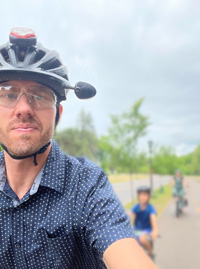 You might expect this blog post from a sustainability officer, but my interest in the topic is less positional and more personal. Twelve years ago, I joined PHS as a resident assistant in long term care. I quickly discovered this as the perfect place to start my career — witnessing firsthand the power of community and the thick web of relationships that make life meaningful.
You might expect this blog post from a sustainability officer, but my interest in the topic is less positional and more personal. Twelve years ago, I joined PHS as a resident assistant in long term care. I quickly discovered this as the perfect place to start my career — witnessing firsthand the power of community and the thick web of relationships that make life meaningful.
Years later, as administrative officer, I help lead organizational process improvement and data-driven decision-making. To put it another way, my job involves asking pesky questions such as, “Okay, but how do you know this will help employees or residents?” Or, “Have you considered everyone who could be impacted by this decision?”
When I consider the topic of sustainability, I have a millennial upbringing and passion for caring for our earthly home. I am also a bit of a skeptic and can’t help but perceive most corporate sustainability campaigns as little more than greenwashing and selling gizmos that don’t get to the heart of sustainability.
Like Ray, I have taken on sustainability practices that have transformed my life. My wife and I lived in the Boston area for four years during graduate school, and we experienced walkable community. Within a mile were all the places that we traveled on an average day – school, work, the grocery store and the Punjabi Indian café that cast enchanting aromas into our apartment. In this place, it was natural for people to walk or bike everywhere, because it was the most obvious and convenient way to get around.
But then we moved back to the Midwest where the car is the standard mode of transportation. Here our cities were designed primarily around the car, not the spaces where people live and gather. So, in an act of defiance, I pledged to bike to work every day, and our family went from two cars to one.
Now, I can honestly say that I enjoy my commute, even on the brutally cold days in January. It is equal parts exhilarating, humbling and calming. It also keeps me healthy, I save thousands on car payments and gas, and I find myself interacting with random people on sidewalks in ways that you never would in a car (a lot more smiling).
Sustainable places
 If I had to name the top sustainability advantage of senior living it would be this: the standard design of senior living communities mirrors the historic places we like to visit, offering close, car-free access to the things that bring joy every day.
If I had to name the top sustainability advantage of senior living it would be this: the standard design of senior living communities mirrors the historic places we like to visit, offering close, car-free access to the things that bring joy every day.
In his book, Mouzon describes an experience while he was in architecture school, and his family wanted to go for a walk after Thanksgiving dinner. Because they lived in a suburb surrounded by busy streets, they chose to drive to an older neighborhood that was more walkable. He describes feeling pained that despite the fancy tools of the technological age, new places aren’t nearly as livable as those designed with practices passed down for generations.
This reminded me of a recent trip my family made to Phoenix. Most of Phoenix is auto-dominated and not comfortably walkable, but when we were there, my wife and I visited Culdesac, a “car-free” development in Tempe, Arizona.
What you notice when you walk around this mixed-use housing development is that it is built to human scale because it isn’t dissected by streets. There is something about the absence of cars that just puts one at ease; you could let your kids roam around the buildings without the constant threat of traffic. It was clearly a community designed with great intentionality, and in ways that villages have been built for thousands of years. It even reminded me of the Greek islands that my wife and I visited during our semester abroad in college (okay, Tempe lacked views of the Mediterranean).
Mouzon states that sustainable places have four primary attributes.
- First, they are nourishable, with easy access to food and drink.
- Second, they are accessible, with easy access by walking/biking.
- Third, they are serviceable, where the basic services of life are accessible and people can “make a living, where they are living.”
- Fourth, they are securable, and feel safe.
Most senior living communities check all these boxes — and not surprisingly, these are top reasons why people choose senior living.
Show me the numbers
 If you are still reading, perhaps you are thinking, okay, this sounds nice and good, but show me the numbers! Even though I am arguing for a broader definition of sustainability, most often, we find “sustainability” measured in terms of greenhouse gasses. The Environmental Protection Agency (EPA) identifies the largest sources of human greenhouse gas emissions as fossil fuels for transportation, electricity and heat.
If you are still reading, perhaps you are thinking, okay, this sounds nice and good, but show me the numbers! Even though I am arguing for a broader definition of sustainability, most often, we find “sustainability” measured in terms of greenhouse gasses. The Environmental Protection Agency (EPA) identifies the largest sources of human greenhouse gas emissions as fossil fuels for transportation, electricity and heat.
Similarly, the Nature Conservancy identifies transportation as the largest contributor to an individual’s carbon footprint, followed by their home. (Check out their online calculator to estimate your carbon footprint.)
The local lifestyle offered by a senior living community can cut personal transportation emissions considerably. Communal spaces and shared amenities also equate to less square footage of conditioned space required per person compared to single-family houses. Care services are also delivered much more efficiently in places where people live together, compared to the many hours of “windshield time” racked up by delivering personal care services to individual homes.
The US Energy Information Administration estimates that apartments with five or more units are twice as energy efficient as single-family homes. There’s obviously less square footage to heat and cool, and apartment dwellers also typically live in structures built with greater efficient use of city infrastructure and raw materials.
While there are certainly advancements in building technology that can make one home “greener” than another in terms of emissions — and here at PHS we are investing in solar, energy efficiency, food waste recycling and more — I believe that sustainability has less to do with whether a building is LEED certified and more to do with whether the building is a place where people love to gather.
A “green building” built in the middle of parking lots, which can only be driven to, has merely the appearance of green. Regardless of its energy efficiency, a building where hundreds of people live in community — less prone to isolation and enriched by wellness and social amenities — will create sustainability as almost no neighborhood of single-family homes can.
As Mouzon notes in his book, sustainable places are places people come to love because it’s where they gather together and make memories. These places will be cared for over time, and as they are maintained, their initial resource investment is spread over many years.
I believe we have a moral imperative to show more love to our earthly home. It just so happens that communal living can deliver sustainability and significant improvements in personal well-being. This is the original green.
Find out more about the benefits of living at a Presbyterian Homes & Services community.
 Brandon Due serves as vice president and administrative officer. He began his career at PHS as a resident assistant in 2011. Brandon attended Concordia College in Moorhead, Minn., and graduated from Harvard Divinity School with his master’s of theological studies. Ask him about his family’s rooftop solar production, rainwater collection system, pollinator habitat or how he puts more miles on bikes than cars each year.
Brandon Due serves as vice president and administrative officer. He began his career at PHS as a resident assistant in 2011. Brandon attended Concordia College in Moorhead, Minn., and graduated from Harvard Divinity School with his master’s of theological studies. Ask him about his family’s rooftop solar production, rainwater collection system, pollinator habitat or how he puts more miles on bikes than cars each year.
